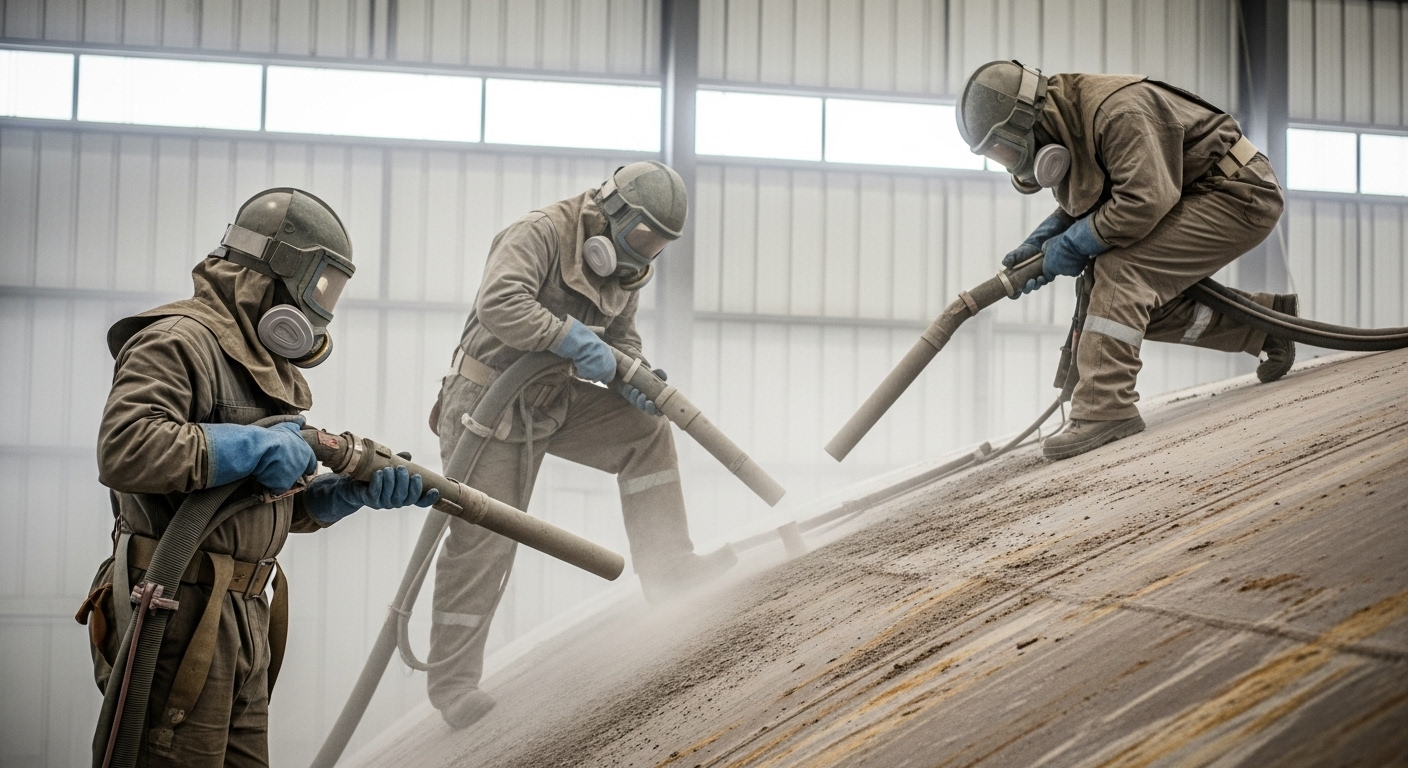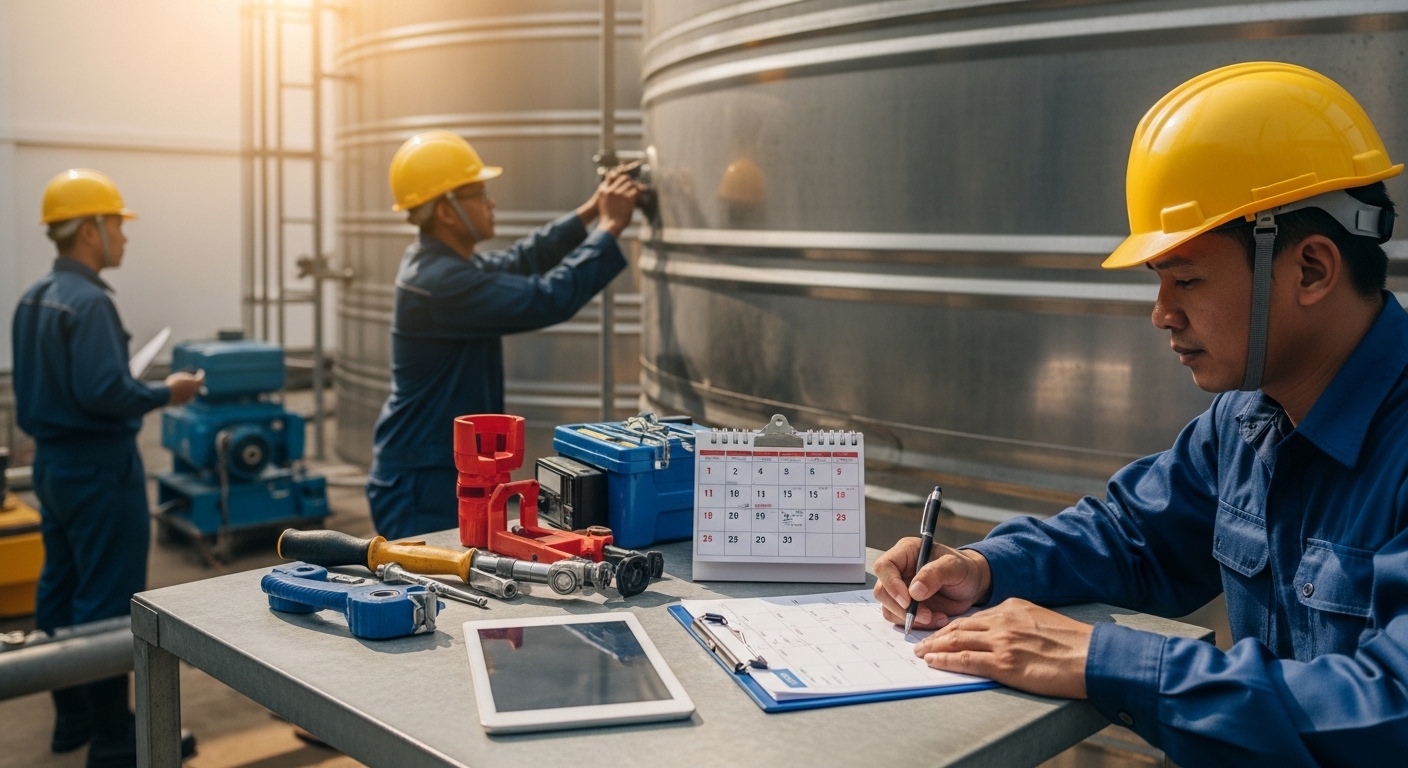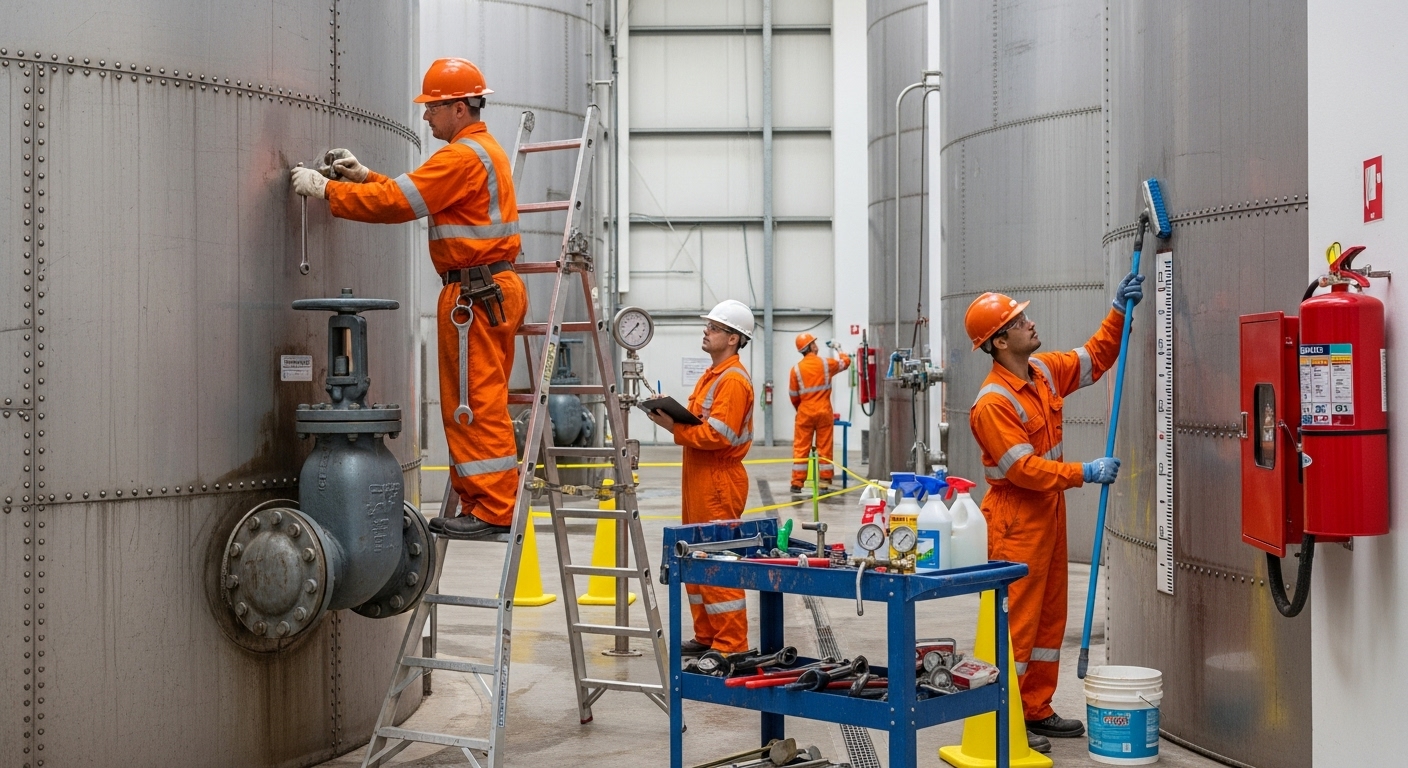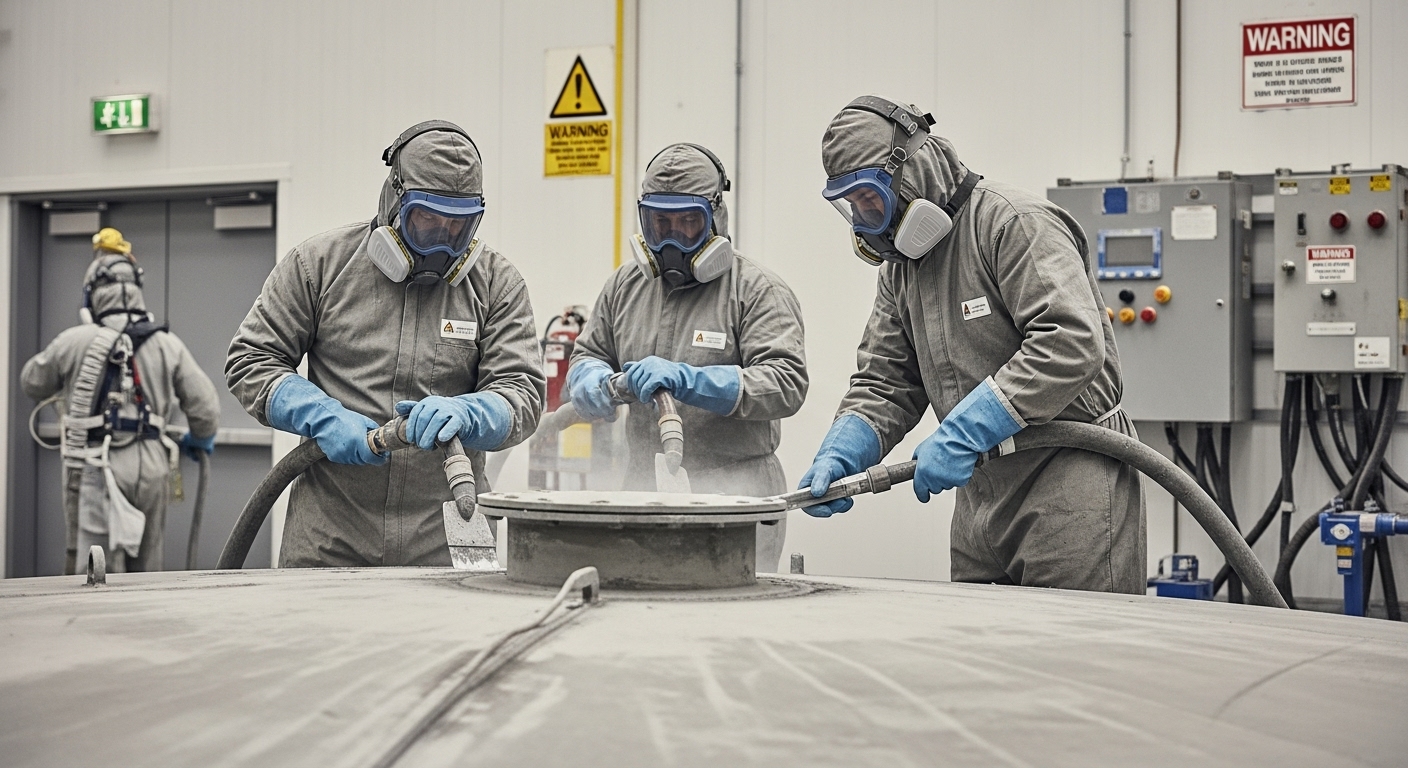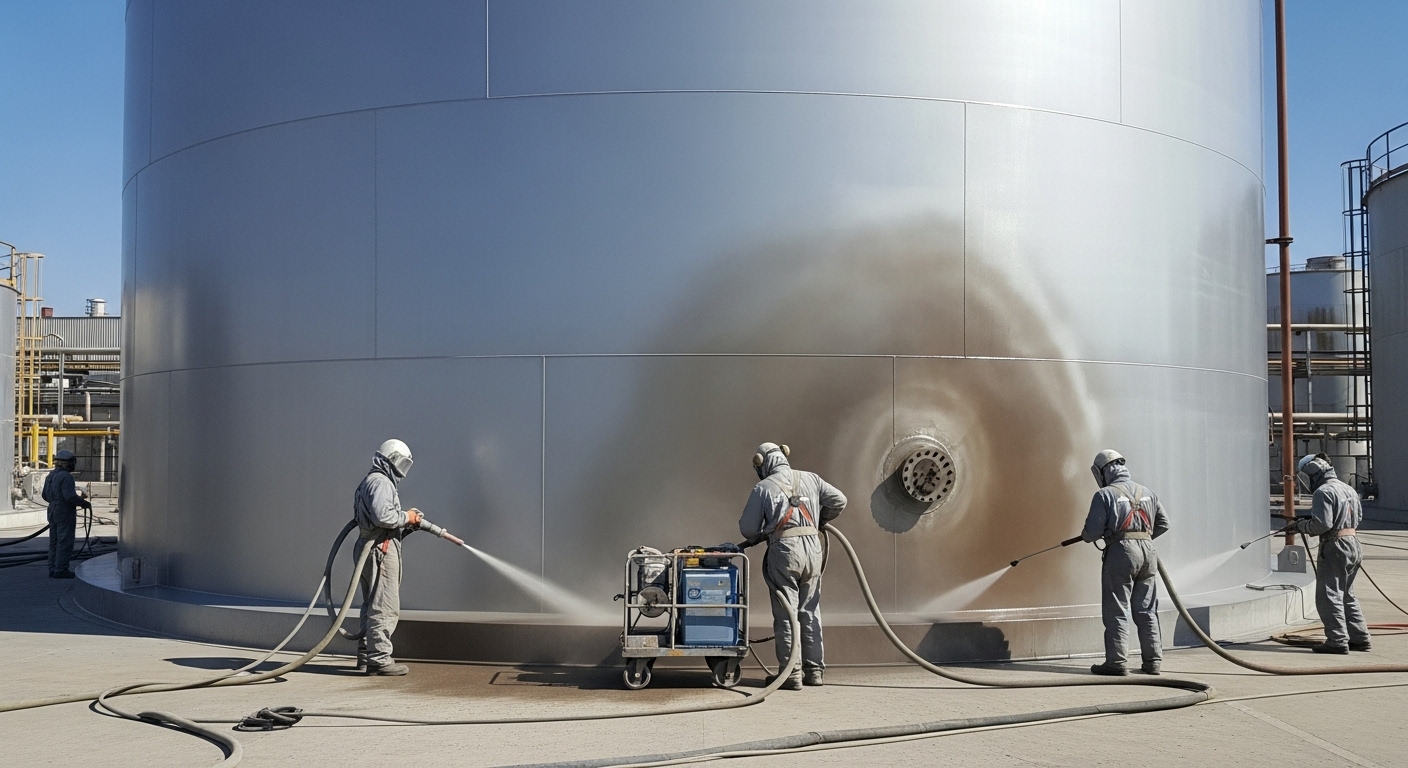Water is life, and the infrastructure that holds it deserves the same level of care as the resource itself. Over time, water tanks and towers face a silent enemy—corrosion, rust, and surface degradation that threaten both their safety and lifespan.
This is where water tank sandblasting services step in, providing more than just cosmetic upgrades. Done right, advanced sandblasting ensures tanks remain structurally sound, clean, and prepared for protective coatings that guard against future damage.
But here’s the thing: sandblasting isn’t just about pointing a hose at a surface and blasting away rust. It’s an engineered process involving precise tank surface preparation, careful blast media selection, strict safety protocol compliance, and expert application techniques.
The difference between cutting corners and doing it properly can mean decades of extra life for a tank—or costly repairs that hit communities hard. Let’s dive into the advanced techniques that set industry leaders apart.
Why Water Tank Sandblasting Services Are the Foundation of Long-Term Tank Health
The truth is, a water tank’s protective coating is only as good as the preparation underneath it. Without proper water tank sandblasting services, even the highest-quality paint or lining will fail prematurely. Think of it like painting over peeling wallpaper—the surface must be clean and stable to make coatings last.
Modern sandblasting focuses on meeting SSPC surface preparation standards, which define how thoroughly a surface must be cleaned before coatings are applied. This ensures coatings adhere properly and prevents moisture from sneaking in under the paint. Beyond appearance, this process safeguards communities by keeping their water safe, free of contaminants, and stored in tanks that meet strict structural requirements.
Before the blasting begins, professionals conduct a detailed pre-blasting inspection. This step identifies problem areas, rust levels, and surface irregularities that require special attention. Skipping this step isn’t an option—it’s the foundation for a job done right.
Advanced Water Tower Sandblasting and The Role of Specialized Equipment
Large water towers come with unique challenges compared to ground tanks. They are higher, exposed to more weather, and demand complex scaffolding and rigging systems. Advanced water tower sandblasting techniques use specialized nozzles and blast media to reach every inch of the tower, even the most awkward areas.
Equipment selection is no small detail. The wrong blast pressure can damage steel, while too little pressure leaves behind contaminants. Pairing the right machinery with the right tank cleaning methods ensures both efficiency and precision. In many cases, contractors use containment systems around towers to control dust and debris, protecting surrounding communities and ecosystems from exposure.
The end goal is more than just a clean surface—it’s achieving the correct surface profile requirements so that new coatings bond tightly and withstand decades of weather, water, and wear.
Effective Abrasive Blasting Water Tanks: Choosing the Right Media and Techniques
When it comes to abrasive blasting water tanks, not all blast media are created equal. The choice of grit—whether steel shot, garnet, or other abrasives—depends on the tank’s condition and the desired finish. This decision is crucial because different media create different surface profiles, directly impacting coating adhesion.
Expert contractors don’t just blast blindly. They evaluate rust severity, previous coating materials, and environmental factors before selecting the right media. This tailored approach minimizes over-blasting and ensures efficient rust removal techniques that extend the life of the tank.
Timing is also critical. Once blasting is complete, the cleaned surface must not sit exposed for long. Moisture in the air can cause flash rusting within hours. That’s why professionals prioritize immediate painting application after blasting, locking in the clean surface with protective coatings before corrosion has a chance to return.
The Science Behind Tank Surface Preparation and Coating Longevity
Surface preparation is more science than art. When done right, it creates a micro-textured surface that coatings can grip onto. The process goes beyond rust removal—it addresses mill scale, old coatings, and contaminants like oil or dirt that could interfere with adhesion.
In advanced projects, professionals follow strict SSPC surface preparation guidelines to measure the profile depth and cleanliness. This ensures consistency across the entire tank. For industrial tanks that store drinking water, surface preparation must meet additional health and safety regulations to prevent contamination.
Even the best industrial tank cleaning methods fail if preparation is overlooked. This is why companies that specialize in tank maintenance invest in training, inspection tools, and documentation systems that guarantee every inch of steel is ready for coating.
The result? Tanks that don’t just look new but function as if they were built yesterday.
How Industrial Tank Cleaning Enhances Efficiency and Safety in Sandblasting Projects
Before blasting even begins, thorough industrial tank cleaning is essential. Dust, sludge, and biofilm can all interfere with blasting and coating. High-pressure washing, vacuum systems, and dehumidifiers are often used as part of tank cleaning methods to create a stable environment for blasting.
This stage also ties directly into safety protocol compliance. Tank interiors often pose confined space hazards, requiring air monitoring, ventilation, and specialized protective gear. Advanced sandblasting contractors prioritize worker safety while ensuring compliance with local and federal standards.
Once cleaning and preparation are complete, blasting can proceed without setbacks. This careful sequencing not only reduces downtime but also minimizes costs by preventing rework. It’s proof that safety and efficiency aren’t trade-offing—they go hand in hand.
Protecting Water Infrastructure with Advanced Sandblasting
At the end of the day, advanced sandblasting isn’t just a maintenance service—it’s a community investment. Clean, strong, and well-protected tanks keep water safe, extend infrastructure life, and reduce long-term repair costs. By combining precision abrasive blasting water tanks, science-backed tank surface preparation, and rigorous safety protocol compliance, professionals create results that last for decades.
If you’re responsible for water storage systems, cutting corners on preparation or coating simply isn’t an option. You need experienced experts who understand the science, safety, and responsibility behind each project. Protecting your tank means protecting your community.
Ready to extend the life of your tank with proven techniques? It’s time to Get Professional Sandblasting Services and secure the long-term safety and reliability of your water infrastructure.


